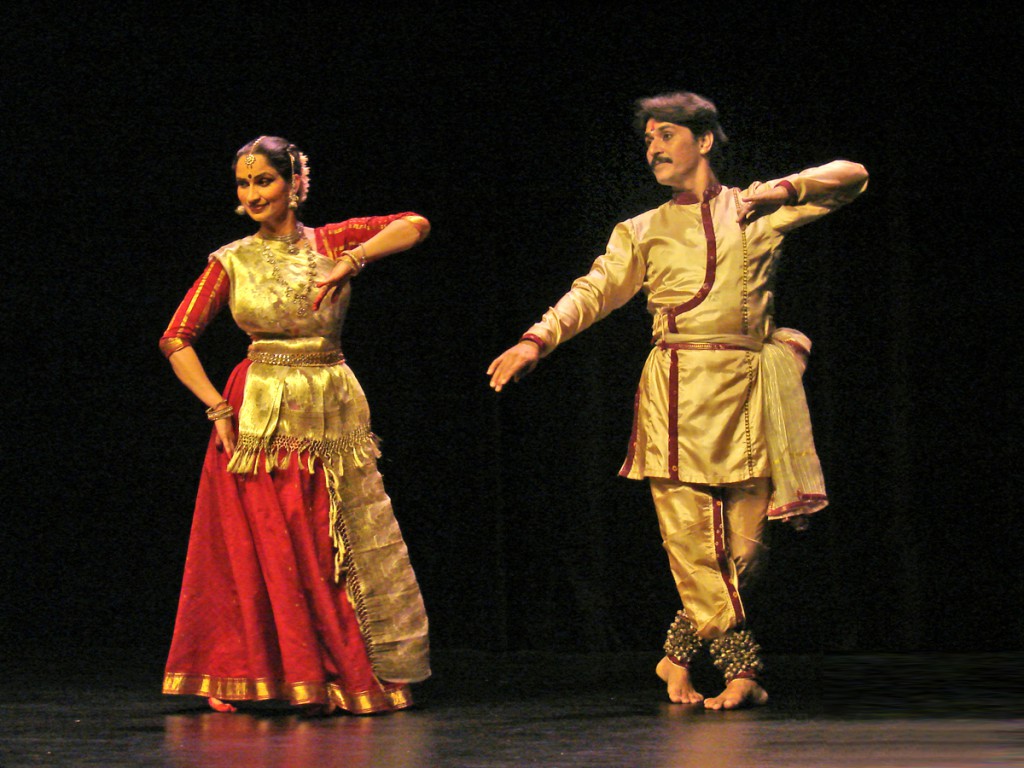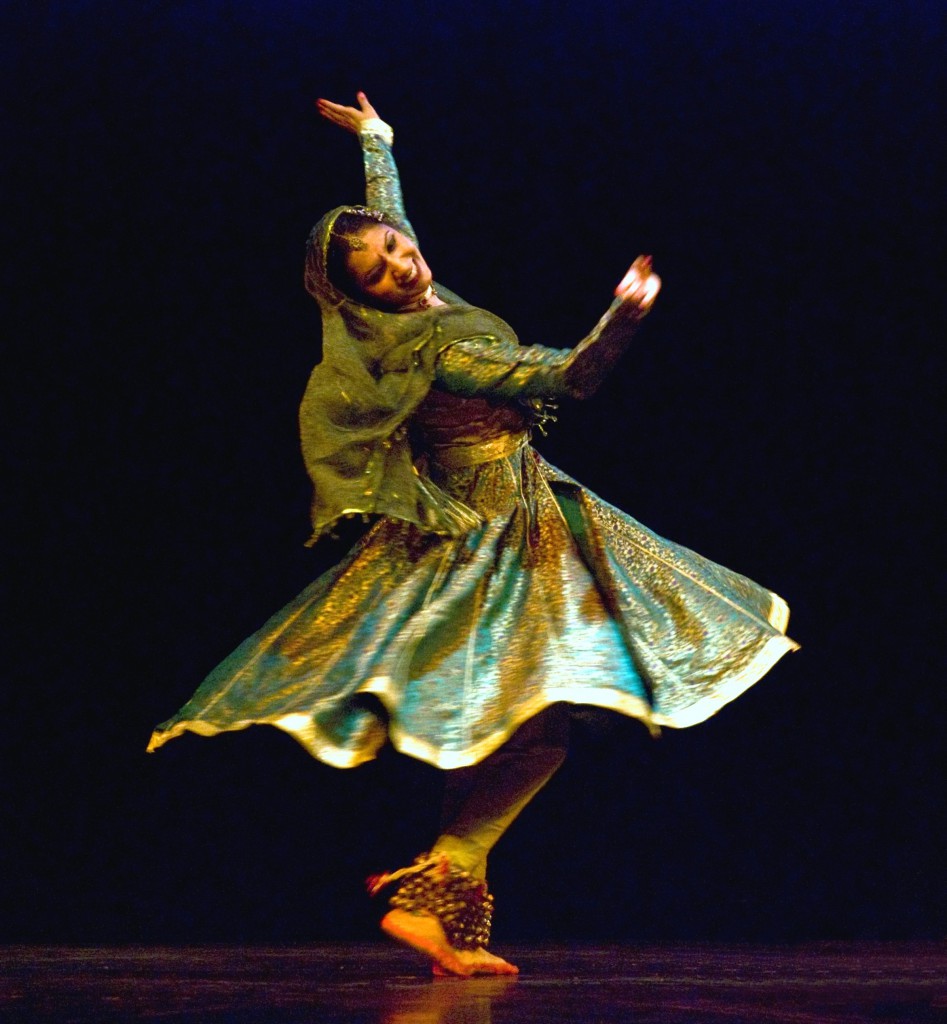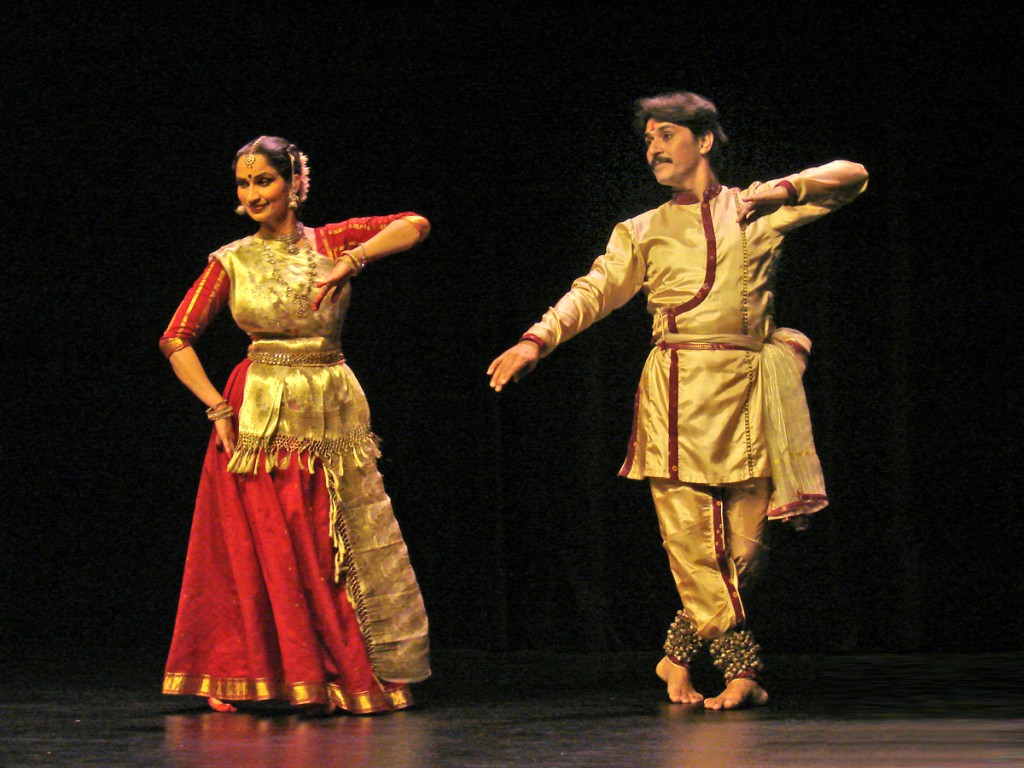
Kathak
Kathak is one the eight classical dance forms in India. The name itself is derived from the Sanskrit word – Katha (Story). The narrator of a story is called Katthaka in Sanskrit. Hence this dance form which narrates a story through the expressions and body movements came to be called Kathak.
The dance form of Kathak has three main schools which have their own unique style and instruments. The schools known as Gharanas are Lucknow Gharana, Banaras Gharana and Jaipur Gharana.
The first two Gharanas are the ones from Uttar Pradesh. The Lucknow Gharana has a lot of Mughal influence reflected in it. The Banaras Gharana showcases a lot of use of the dance floor, not only for movement of the feet but also a flop down movement which shows the danseuse hugging the floor.
Origin and History
As per the literary records at Kameshwar library at Mithila, Kathak had it’s origin in the 3rd or 4th century BC. Even mythological stories like the Mahabharata talk about Kathak.
It was during the Mughal era; in 16th century A.D. that Kathak received Royal patronage and was performed in the courts to entertain the Royals. During this period, Kathak received elements of fusion from other dance forms like the Persian dance form wherein the art of straight leg movements was introduced as also the spinning movement.
In the following years, Kathak received the royal patronage of the Nawab of Awadh – Wajid Ali Shah who was the main moving force behind the creation of the Lucknow Gharana in the 19th century. The Lucknow Gharana reached it’s pinnacle of perfection under the guidance of Thakur Prasad Maharaj who was the chief court dancer in the Nawab’s court. His legacy was carried forward by his sons- Bindadin Maharaj and Kalkadin Maharaj.
Around the same time the Banaras Gharana also evolved. This Gharana was developed by a gentleman by the name of Janakiprasad. During British rule in India, Kathak came to be referred to as an uncouth entertainment form stereo cast as something associated with the trade of immoral women. Here on, Kathak saw a sharp decline in its popularity.
During early 20th century, Kalka Prasad Maharaj, a decendent of Thakur Prasad Maharaj brought Kathak back on to the world stage. His work was carried forward by his following generations.
Style
Notably, there are two styles of performing Kathak. The first one is Nritta which has a structure of pure dance in which the performances moves from slow to a faster pace and then reaching a crescendo at the climax. It often has two kinds of compositions. The shorter ones are called tukra and the longer pieces are known as toda.
The second style is called Nritya which focuses on expressions as the main mode. This style uses pieces of expressions to convey a story. This performance style is also known Bhaav Bataanaa. The modern day Kathak uses more of Nritya style.
The Nritya style is more associated with the Lucknow Gharana while Nritta is associated more so with the Banaras Gharana.
In early years, the performers wore sarees due to the Hindu influence. With the advent of the Mughal influence, the attire changed to anarkali suits with pyjamas and lehenga with choli. A dupatta or an Odhni (veil) is tied across from the right shoulder to the left side towards the waist. A kamarbandh (Waist belt) made of either zari with precious stones or cloth with meenakari work is used. Ghungroos (anklets) are for the feet. The unique aspect of Ghungroos in Kathak is that unlike other classical dance forms, the bells are not fixed on to a patch of leather. Instead, they are woven through a thick string. The Ghungroos also possess 100 bells.
An option being explored nowadays is that of a small peaked cap which is worn during performances. Traditionally, fabric made from silk was used for the clothing for the body. However with passage of the time, cotton is increasingly being used.
Jewellery for the Kathak danseuse includes a bindi (teardrop or round shaped gold attached at the forehead), and jhumka (earrings).
Innovations
The Anarkali suit or the churidaar & kameez for the Kathak performer is designed such that it is fitted tight around the waist and the skirt portion below the waist has a flared style so that when the dancer executes a movement of going round and round while standing at the same spot, it gives a wonderful spinning effect.
Traditionally, bangles were not used. The sleeve of the jacket used to have an embroidered stitching which would give a virtual effect of bangles. However nowadays, the real bangles are being used.
Influences over the Years
The biggest influences for the Lucknow Gharana are the descendents of Thakur Prasad Maharaj. In today’s times, Pandit Birju Maharaj has carried forth that legacy. The Banaras Gharana has it’s own famous face in the form of Sitara Devi, daughter of Pandit Sukhdev Maharaj.
Interesting Facts and Comparisons
- Similarities have been pointed out between Kathak and the Spanish dance of Flamenco especially in the way feet movements are done.
- Kathak has been showcased in many Hindi movies including the iconic Pakeeza, Mughal-e-Azam, Shatranj Ke Khiladi and more.
- In contemporary times, Kathak Yoga as part of the kathak movement techniques have been introduced by Pandit Chitresh Das.
References
Categories: Cultural Connections, Indian Performing Arts



